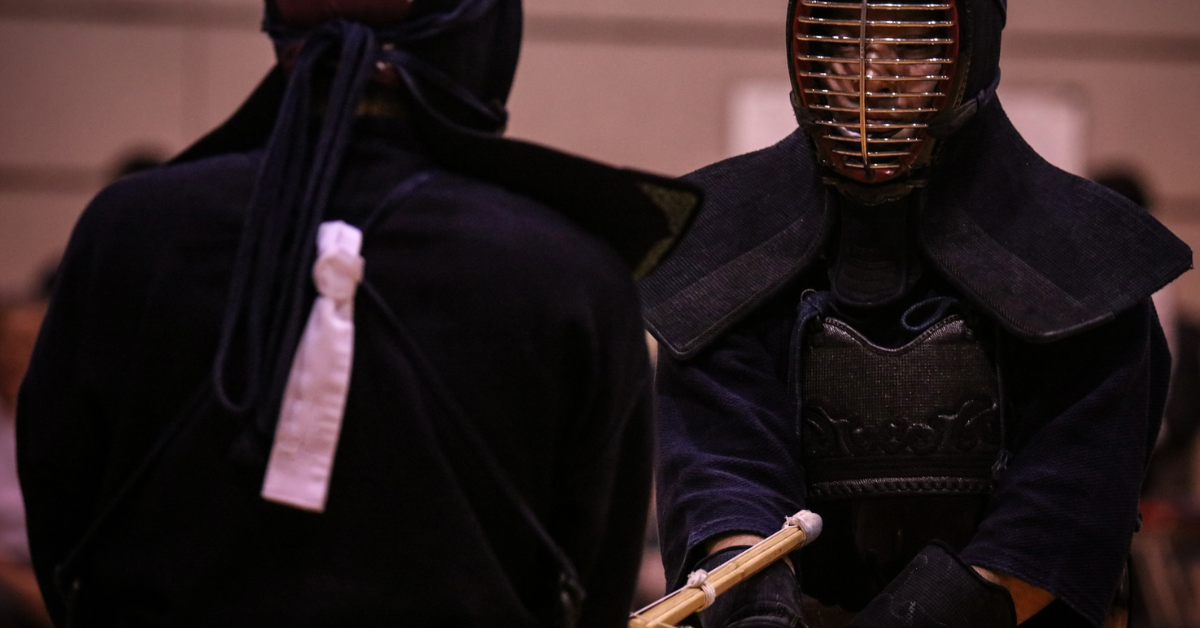Kendo is not only about striking but also about the stances that shape every movement. There are five basic stances—Chūdan, Jōdan, Gedan, Hassō, and Waki—each designed with its own purpose. By learning these postures, beginners and advanced practitioners alike can understand how offense and defense are balanced in Kendo.
The Five Stances in Kendo
In Kendo, a stance is not simply holding the shinai upright. It is a vital element that unites the spirit and technique. The stance chosen influences how one attacks, defends, and controls the flow of a match.
| Stance | Features | Main Purpose |
|---|---|---|
| Chūdan | Balanced offense and defense | The basic stance, most widely used |
| Jōdan | Powerful strikes, creates intimidation | A decisive, match-ending blow |
| Gedan | Low guard that lures the opponent | Invites attack and counters |
| Hassō | Diagonal guard from the shoulder | Unpredictable and versatile |
| Waki | Shinai hidden at the side | Surprise and ambush attacks |
Chūdan-no-kamae
Chūdan is the foundation of Kendo and the first stance students learn. The tip of the shinai points toward the opponent’s throat, simultaneously suppressing them while preparing for one’s own attack.
- Quick transitions between offense and defense
- Easy to maintain proper distance (ma-ai)
- Provides stability of posture and balance
Chūdan is not only a defensive stance but also the starting point for attack. It can be used flexibly in any situation, making it the most frequently applied stance by both beginners and advanced practitioners.
Training Points for Chūdan
| Practice Method | Benefit | Key Reminder |
|---|---|---|
| Repeated suburi (swing drills) | Improves stability of the shinai tip | Avoid excess tension in arms and wrists |
| Distance training | Builds sense of ma-ai | Keep the shinai tip at proper height |
| Zanshin after strikes | Reinforces offense-defense unity | Maintain posture after attack |
Jōdan-no-kamae
Jōdan is an aggressive stance with the shinai raised overhead, used to overwhelm the opponent with offensive pressure. From this position, a strong, decisive strike can be delivered.
However, the stance leaves the defender open, so instant judgment and intensity of spirit are essential. Depending on which hand grips the shinai forward, there is Right-Jōdan and Left-Jōdan.
Advantages and Disadvantages of Jōdan
| Aspect | Advantages | Disadvantages |
|---|---|---|
| Offense | Can end a match in one blow | Large openings if attack fails |
| Mental impact | Intimidates and controls opponent | Requires high mental stamina |
| Application | Useful in attack-focused matches | Difficult to defend from |
Gedan-no-kamae
Gedan places the shinai below the waist, a stance used to lure the opponent into attacking carelessly. It may look vulnerable, encouraging the opponent to strike, but that very moment is used to counter.
Patience and composure are required. Gedan relies on drawing out attacks, so accurate distance judgment and quick reaction are vital.
Situations Where Gedan Excels
| Situation | Effect | Example |
|---|---|---|
| Versus defensive opponent | Encourages them to strike | When opponent stays firmly in Chūdan |
| Against passive fighters | Forces them to move | Opponent avoids initiating attacks |
| When opponent is impatient | Exploits rushed movements | During the final moments of a match |
Hassō-no-kamae
Hassō positions the shinai diagonally upward from the shoulder. It can be taken on either side (Right Hassō or Left Hassō). Its strength lies in versatile and unpredictable attacks.
- Allows varied strike patterns
- Prevents the opponent from anticipating movements
- Visually impressive, often used in demonstrations
Diagonal downward strikes and quick kote (wrist) attacks are particularly effective from Hassō. Because of its unpredictability, it is often used to change the flow of a match.
Waki-no-kamae
Waki hides the shinai beside the body, making it hard for the opponent to see the tip. Strikes from this stance often feel like surprise attacks, reducing the opponent’s reaction time.
However, it is difficult to control and leaves vulnerabilities if not executed properly. Thus, it is mostly used by experienced practitioners who employ it strategically for ambush-style offense. Historically, this stance was widely used in Kenjutsu, valued for its psychological effect on opponents.
Comparing the Five Stances
The five stances can be compared by their strengths, weaknesses, and difficulty.
| Stance | Offense | Defense | Difficulty | Typical User |
|---|---|---|---|---|
| Chūdan | Medium | High | Low | Focuses on fundamentals |
| Jōdan | High | Low | High | Aggressive and spirited |
| Gedan | Medium | Medium | High | Calm and patient |
| Hassō | Medium | Medium | Medium | Creative and flexible |
| Waki | High | Low | High | Tactical, surprise-focused |
Conclusion
The five Kendo stances each have their own role and intention.
- Chūdan forms the essential foundation.
- Jōdan provides overwhelming offensive power.
- Gedan emphasizes patience and counters.
- Hassō introduces variation and unpredictability.
- Waki is tactical and suited for surprise.
Beginners should first master Chūdan thoroughly, as it provides the basis for understanding the others. A stance is not just a posture but a way to unite body and spirit while synchronizing with the opponent. Learning these five stances is the first step toward enjoying the deeper aspects of Kendo and refining one’s skill.






